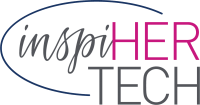

I recently was asked to speak on a panel at Accenture for their Women in Innovation group about Access.
In getting ready for this event, I got my nails done, spent too long figuring out my outfit and made sure to have notecards with my key talking points.
For me, how I presented myself and what I said mattered. This was all part of my messaging.
I wanted them to understand quickly that I took this invitation seriously. I came ready to make a difference and contribute.
In this month’s Belong we talk about messaging and its importance in showing a potential or current employee how serious your company’s commitment is to create an inclusive workforce.
Your website images and your physical office space are like the outfits your company wears. You need to “try on” and discard outfits that no longer fit.
The words on your website, in external communications and during the hiring process, are your talking points. Is it time to rewrite job descriptions, reevaluate your interview questions, change the language on your website or out on social?
These days culture along with the company mission and values are strongly considered as current and future employees select their next career move. How you present yourself matters.
What message are you delivering?
Stay InspiHERed,

CEO | Founder of InspiHER Tech, a Laso Company

How to Approach the Message of Inclusion
Inclusive messaging is telling the world that your company has a culture of belonging. But inclusive messaging goes broader and deeper than individual tactics. It’s an all-encompassing “cultural condition that changes everything,” organizational consultant Sabrina Clark tells CIO Dive.
“You don’t just fast-forward to belonging. You have to go through the hard work of creating that inclusive culture so you can get to belonging.”
So it’s essential to first understand why you need inclusive messaging and how to approach creating it, before considering practical tips.
Words—and Images—Matter
The messaging used by your company is a powerful indicator of where you stand on diversity and inclusion and how seriously you take that stance.
In a 2018 Medium post, Nehemiah Green of Diversity Together describes the importance of inclusive messaging: “Messages are an opportunity for you to share why inclusion and belonging are important to your company. They signal who belongs at your organization.”
Clark, in her interview with CIO Dive, describes how messaging, or “brand”, is “intimately connected” to culture. “What is your brand saying about who you are as a culture?” Answering this question, she says, is part of the “journey toward building a more inclusive organization.”
Getting Below the Surface
Messages of belonging start with the right foundation.
In a July 2019 article covering how to create a more gender-inclusive workplace, The Predictive Index explains the first step: “Gender inequity is a deeply rooted systemic issue, and therefore requires some work at the foundational level. The old “add women and stir” approach is generally doomed to fail.”
The Forbes Communications Council argues that “embracing” gender inclusiveness needs to be “the fabric of your company.” Contributing to a post for the Council, Hager Spits of Philips comments that “long-term diversity and inclusion must live in every layer of the organization.”
In other words, corporate policy and culture must match the corporate voice. A reality check for what’s behind gender-inclusive messaging should include concrete steps such as creating a women-friendly benefits program, taking sexual harassment seriously, and not only hiring but promoting women employees into management and senior positions of power.
Now, Some Best Practices
- Conduct a comprehensive language audit to weed out gendered language. Is “he” the default term for employees? Are “man-hours” calculated instead of “staff hours”?
- Acknowledge pronoun preferences. In a recent article, HR Technologist says, “For companies eager to embrace gender inclusivity, it is vital to acknowledge the different pronoun preferences of today’s workforce.” The article suggests starting by incorporating pronoun preferences into email signatures and HR interfaces.
- Write inclusive job descriptions. See the [June 2019 issue of Belong].
- Remember, images speak too! Green asks in his Medium post, “What is your profile page signaling about who belongs at your organization? Be mindful of the messages that the photos on your branding page and company website send.”
- Include women engaged in core roles in company videos and in-person recruiting sessions. HR Technologist reports that when Stanford researchers analyzed 84 college recruiting sessions by tech companies, they found that “during sessions that showcased women discussing technology, female attendees asked twice as many questions and were more likely to be engaged—as were the male attendees.”
Every Seat Has a Voice
Inclusive messaging is not only about who you say you are as a company, but also the reality of an organization that gives everyone a say. As Amanda Ponzar of Community Health Charities says for the Forbes Council, “Everyone not only has a seat but also has a voice.”

“We are more than our descriptors,” says this “people-first” guide to inclusive language [Handshake]
Why and how to respect pronoun preferences [HR Technologist]
9 tips for communication free of gender bias [Anti-Defamation League]
Let images show “real women doing real work” [CNN]

“Words do two major things: They provide food for the mind and create light for understanding and awareness.”
—Jim Rohn, American entrepreneur, author and motivational speaker
